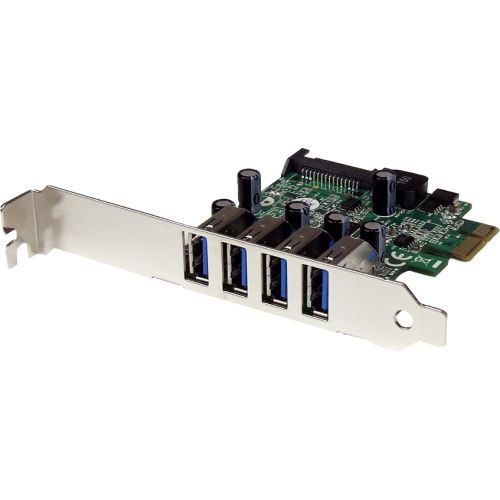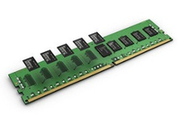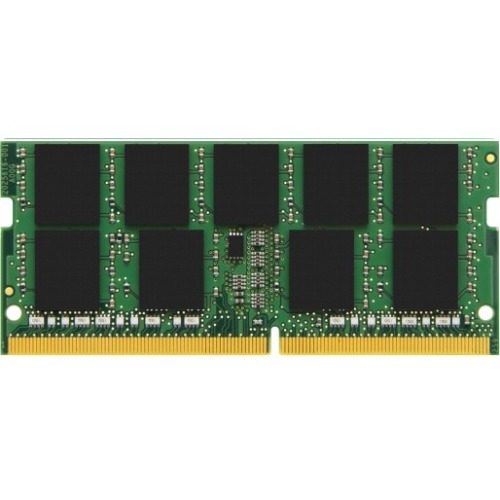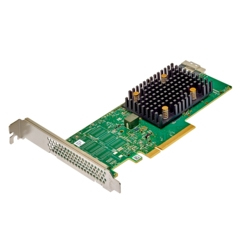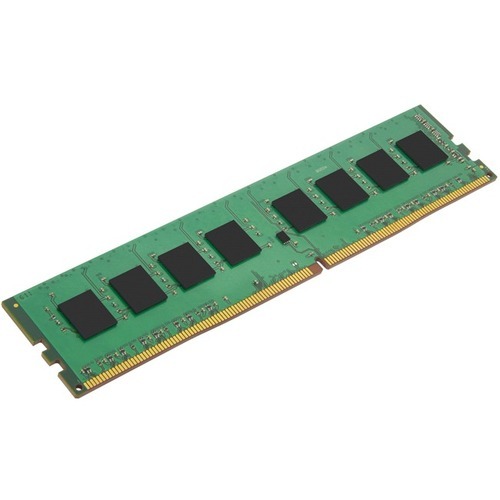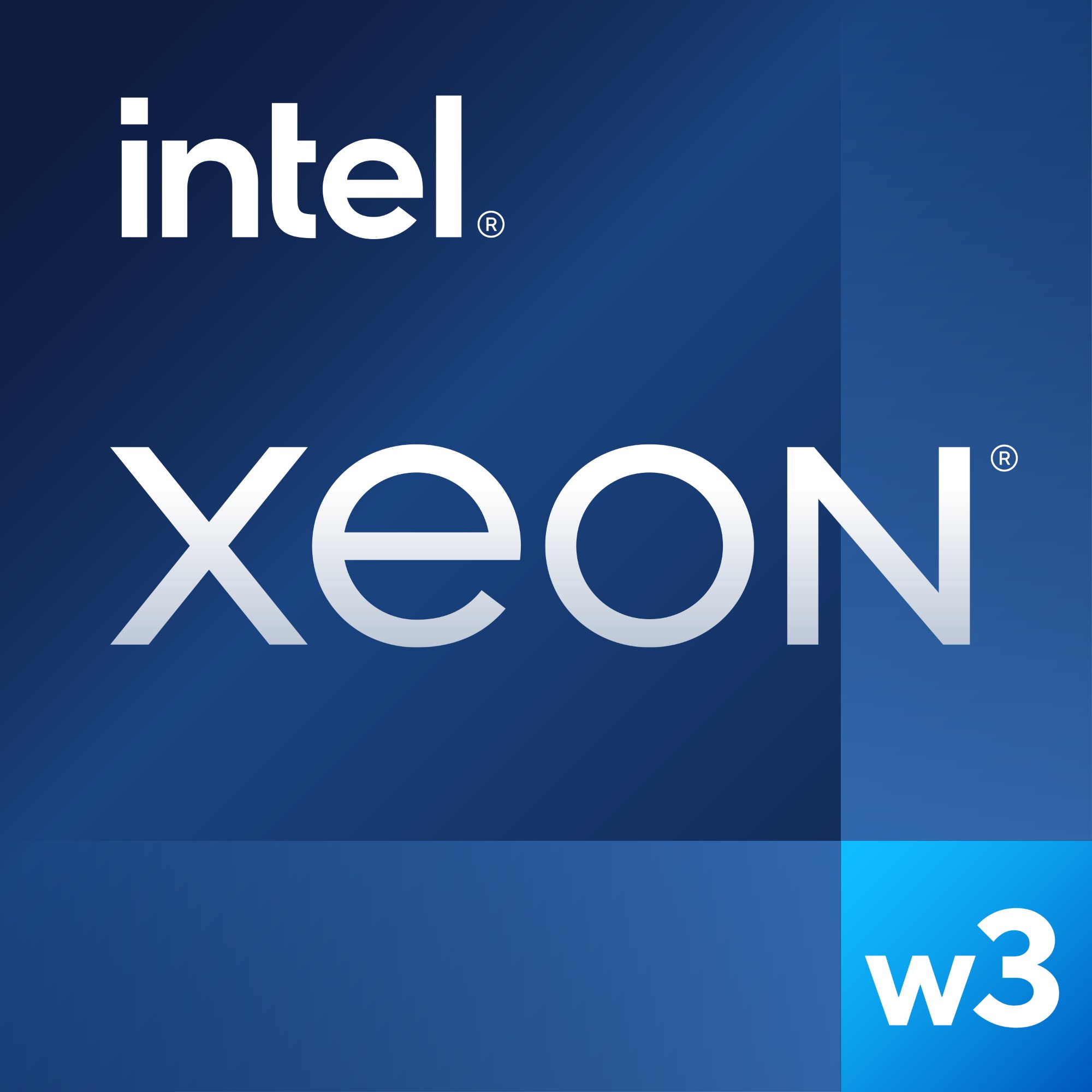Samsung M471A2K43BB1-CRC Samsung 16GB DDR4 memory module 1 x 16 GB 2400 MHz
DRAM is a type of RAM (random access memory) used as the main memory in several computing devices, such as desktop and notebook computers, servers, and high-end workstations. It is the most widely used semiconductor memory used in current generation computers, and offers several significant advantages, such as structural simplicity, very high packing densities (number of bytes that can be stored per unit of chip area), low power consumption, and sufficiently high data read/write speeds. Several types of DRAM are presently available for deployment on various computing platforms, such as home/personal computers, portable computers, and network servers. This type of memory has undergone several innovative technological developments and offers very high price/performance ratios.Two types of DRAM are widely used for deployment in current generation servers: registered memory, and fully-buffered (FB) memory. Both these memory types are commercially available as DIMMs (dual inline memory modules). Registered DIMMs (or RDIMMs) are designed with an additional hardware register between the DRAM module and the system’s memory controller. RDIMMs present several advantages for the system, such as a lower electrical load on the memory controller and sustained stability even with an increase in the number of installed memory modules. Thus, RDIMMs are often the default choice for deployment in server-class computing systems. Fully-buffered DIMMs (or FB-DIMMs) are intended to be used in systems requiring higher memory densities with limited board space. As opposed to the parallel data transfer technique used in normal DRAM, FB-DIMMs transfer data in a serial format, using an additional buffer, known as advanced memory buffer (AMB) between the memory controller and the FB-DIMM modules. The AMB acts as an intermediary and handles all data reads/writes for the memory modules, taking care of issues such as signal degradation and error correction and reducing any overhead on the memory controller. Thus, FB-DIMMs prove to be a reliable alternative for deployment in server-grade machines.
StarTech.com PEXUSB3S4V StarTech.com PEXUSB3S4V interface cards/adapter Internal USB 3.2 Gen 1 (3.1 Gen 1)
Add 4 external USB 3.0 ports to a low profile or standard computer, through PCI ExpressThe PEXUSB3S4V PCI Express USB 3.0 Card (with SATA Power) adds 4 external USB 3.0 ports to any PCI Express-enabled computer system with support for data rates up to 5 Gbps, while remaining backward compatible with USB 2.0 / 1.x devices.Enhanced with UASP support (USB Attached SCSI Protocol), this USB 3.0 controller performs up to 70% faster than conventional USB 3.0 when paired with a (Note: UASP requires a compatible operating system). Using a more efficient protocol than the traditional USB BOT (Bulk-Only Transport), UASP technology optimizes transfers by allowing multiple commands to be processed simultaneously, significantly increasing transfer speeds for less wait time on data transfers. See our UASP test results below for further details.The card uses a ""stacked"" port layout that places the ports one on top of the other, enabling all four USB 3.0 ports to be external facing, while still allowing the card to fit into a small form factor/low profile computer system using the included low profile bracket.Plus, with a built-in SATA power connector, each USB port can provide up to 900mA of power to devices that draw power from a host bus connection (500mA for USB 2.0) by connecting to your computer power supply.Backed by a StarTech.com 2-year warranty and free lifetime technical support.Improved Performance with UASPUASP is supported in Windows 8, Server 2012 and Linux kernel 2.6.3 or later. In testing UASP performed with up to a 70% faster read / 40% faster write speed over traditional USB 3.0 at peak performance.At the same peak in testing, UASP also showed up to an 80% reduction in required processor resources.Test results were obtained using an Intel Ivy Bridge system, StarTech.com add-on USB 3.0 cards, a UASP-enabled StarTech.com enclosure, and a SATA III solid state drive.The StarTech.com Advantage- USB 3.0 PCI-E card has 4 external USB 3.0 ports using a space-saving stacked layout- Time-saving file transfers, up to 70% faster than traditional USB 3.0 when used with a UASP-supported enclosure- Power high-powered USB devices as necessary, with the optional SATA power connector
Samsung M393A2G40DB0-CPB Samsung 16GB DDR4 2133MHz memory module 1 x 16 GB ECC
Boost your PC’s performance to new levels.You need the right expert for the right PC memory solution.Samsung is a leader in the DRAM market, with our DRAM being selected by most OEMs for many years.Embrace the cutting-edge Samsung DDR4 to take your PC to a new dimension of high speed and low energy performance.Improved bandwidth for high-end applications.With PC applications becoming more critical and complex, personal computing has set its toughest demands yet. PCs today need to provide exceptional speed to deliver the performance required.Samsung 2xnm DDR4 UDIMM and SODIMM enable initial bandwidth of 2,400 Mbps, which can achieve up to the JEDEC-defined 3,200 Mbps. DDR4 has 2 times higher bandwidth than DDR3.Complete multi-tasking with less energy.Consumers want to be able to rely on excellent battery power to complete their tasks. Samsung PC DRAM provides longer time unplugged through lower power consumption. This enables extended battery life for notebooks while maintaining high performance.Samsung DDR4 SODIMM and UDIMM consume less power with their unique 2xnm technology. Samsung’s 2xnm DDR4 operating at 1.2V achieves approximately 26% higher performance/watt compared to 2xnm DDR3 operating at 1.5V.Samsung also provides 2xnm LPDDR4 operating at 1.1V, achieving 37% increase in power efficiency than 2xnm LPDDR3 operating at 1.2V.Double your capacity with the world’s 1st 8Gb chips.The advancement in density has enabled Samsung to offer bigger capacity DRAM, delivering the faster data transmission speed that devices require today. PCs can benefit from high density DRAM by using fewer DRAM components, which leads to space saving.Samsung DDR4 UDIMM can achieve the max capacity of 128GB using the world’s 1st 8Gb chips, which is 2 times bigger than that of DDR3’s 64GB made of 4Gb chips.
Kingston Technology KCP426SD8/16 Kingston Technology ValueRAM KCP426SD8/16 memory module 16 GB 1 x 16 GB DDR4 2666 MHz
Kingston memory is designed, manufactured and rigorously tested to meet the exact specifications of each brand name system. It’s guaranteed to be compatible and backed by a lifetime warranty and legendary Kingston reliability.
Kingston Technology KSM32RD4/32HDR Kingston Technology KSM32RD4/32HDR memory module 32 GB 1 x 32 GB DDR4 3200 MHz ECC
Kingston's KSM32RD4/32HDR is a 4G x 72-bit (32GB) DDR4-3200 CL22 SDRAM (Synchronous DRAM) registered w/ parity, 2Rx4, ECC, memory module, based on thirty-six 2G x 4-bit FBGA components. The SPD is programmed to JEDEC standard latency DDR4-3200 timing of 22-22-22 at 1.2V. Each 288-pin DIMM uses gold contact fingers.
Get a Quote
Item(s) added to cart
Netgear GS105E-200NAS ProSafe Plus Switch, 5-Port Gigabit Ethernet - 5 Ports - 2 Layer Supported - Wall Mountable - Lifetime Limited Warranty-None Listed Compliance
MFR: Netgear, Inc
Qty: 1
Part #: GS105NA



